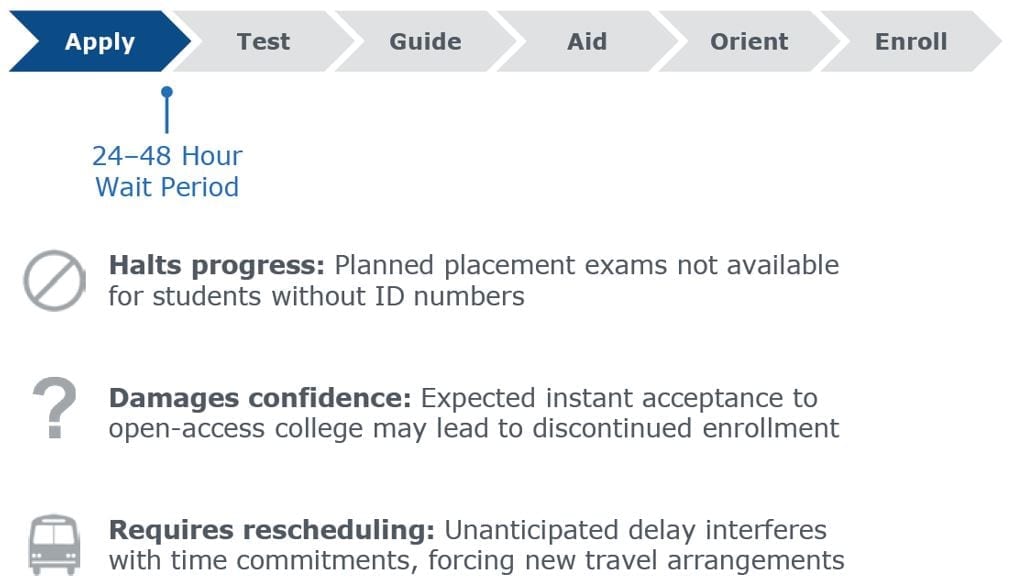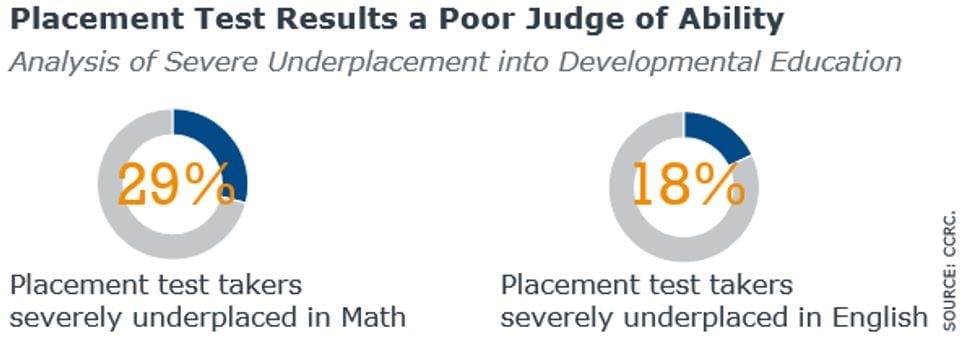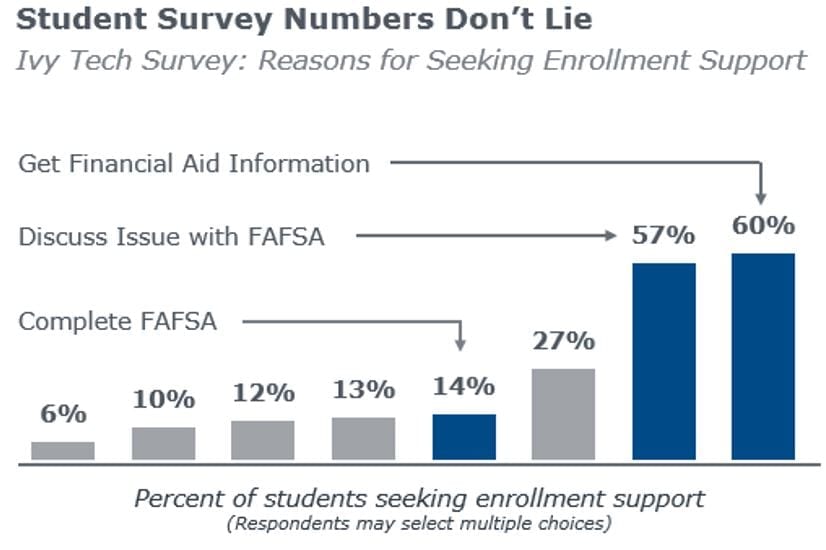While described as open admission, community colleges are only truly open to students who successfully navigate the winding path from admissions through orientation. In fact, more than 40% of students who apply to a two-year college leak out of the pipeline before the first semester starts. Although the current onboarding process makes administrative sense, the many offices to visit and forms to complete seem like a maze of handoffs and dead ends from a student’s perspective.
To help you better understand what your students go through, we tested it ourselves. EAB researchers attempted to enroll at more than 150 community colleges across the company. Here are the four most common mistakes we saw colleges make when onboarding new students.
Mistake #1: Interrupting momentum at the point of application

New students who come to campus expect to enroll in one visit. However, after submitting an application at most colleges, students must wait 24-48 hours before receiving their ID number. Without it, students have limited access to financial aid, advising, and placement. This delay, often a result of student information system (SIS) business rules, forces new students to take unexpected time off of work or find child care to complete enrollment, reducing the chance that they ever return.
To get around this technological hurdle, Laredo Community College in Texas coded a temporary student ID that is generated when an application is submitted. Students can use this number to access the next onboarding steps while the SIS waits to create the student’s official ID number.
Mistake #2: Underpreparing students for placement

Although some colleges have eliminated placement tests, they remain a high-stakes onboarding requirement for most incoming students. Unfortunately, many colleges do not advise new students to study for placement. Many students—the Community College Research Center estimates 29% of math and 18% of English test takers—place into developmental education when they could have earned a B or better in college-level courses.
At Fayetteville Technical Community College, only 12% of military students entering a one-year degree program placed into college-level math. After instituting a pre-placement math boot camp, 92% of the next cohort placed into college-level math. All of those students went on to complete their program in one year, proving that students can succeed with a math refresher instead of a full developmental course.
Mistake #3: Giving generic financial advice to anxious students

Finding money to pay for college is a major enrollment barrier, both practically and psychologically. When students come to campus for financial aid help, they seek an ally to face the intimidating aid process. They typically don’t know the right questions to ask. In response, financial aid staff give generic, straight-from-the-website advice. Such an impression comes off as cold and isolating, leaving students to question whether college is attainable for them.
To help students and demonstrate the college’s financial support, ask inquiring students to try an easy-to-use net price calculator, such as the one at Wellesley College, or show them financial aid profiles, like the ones on the University of Michigan website.
Mistake #4: Leaving major selection to chance

Even students who think they decided on a major may actually be undecided. According to the ACT, only 32% of high school graduates report being “very sure” about their major. And yet the vast majority of community colleges ask students to select a major on the application for admission without providing guidance. Essentially, the first time two thirds of students choose a major, they are guessing. Future advising appointments can change a student’s major, but these require that the student access an advisor and then deviate from the default that is set at the application.
Embedding this conversation into the onboarding process—before the application is finished—can build student confidence and ensure curriculum-career alignment from the very start of a student’s career.
How students experience onboarding might surprise you
We interviewed hundreds of students to understand the challenges they face. Download the infographic to walk through today’s multistep enrollment experience. Learn more.